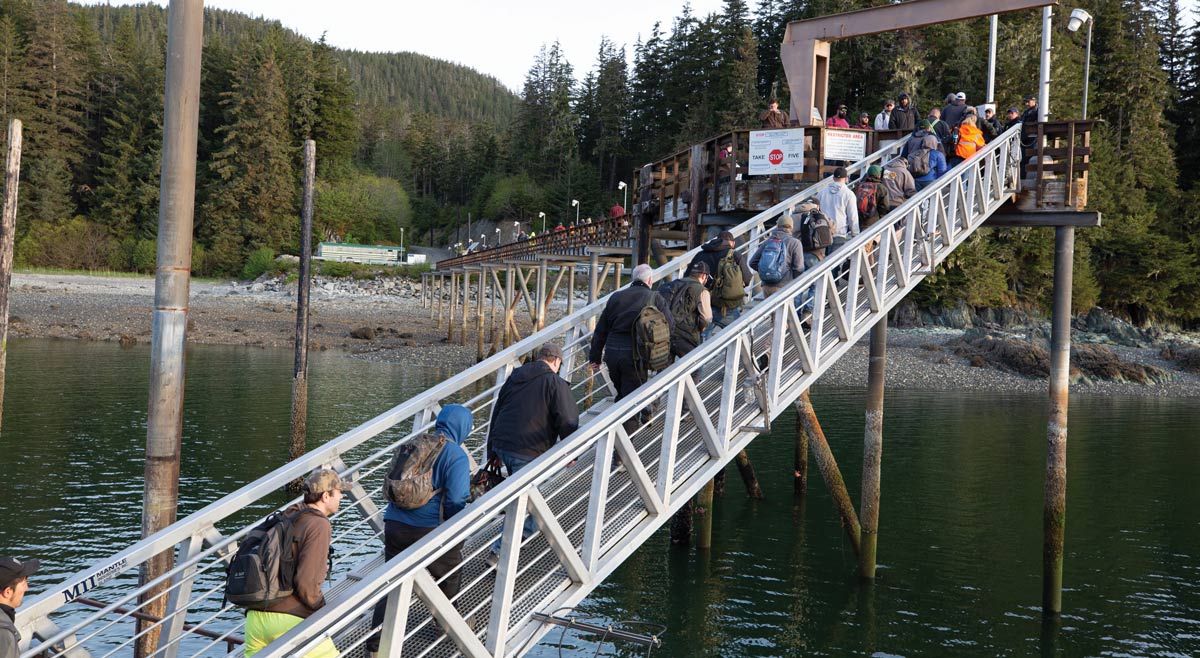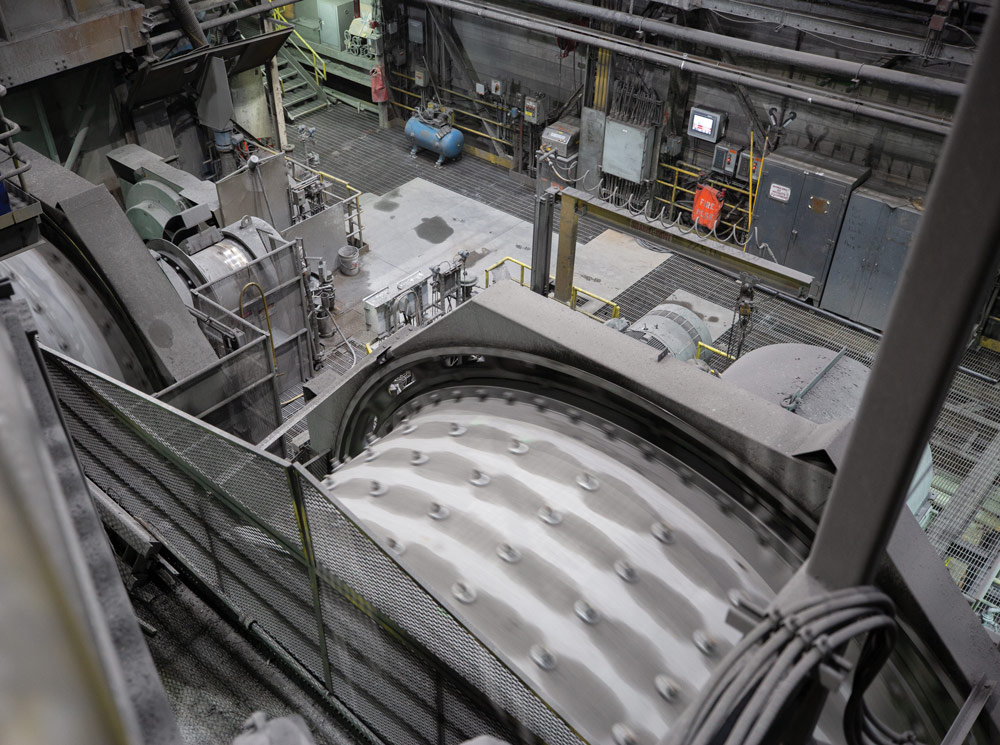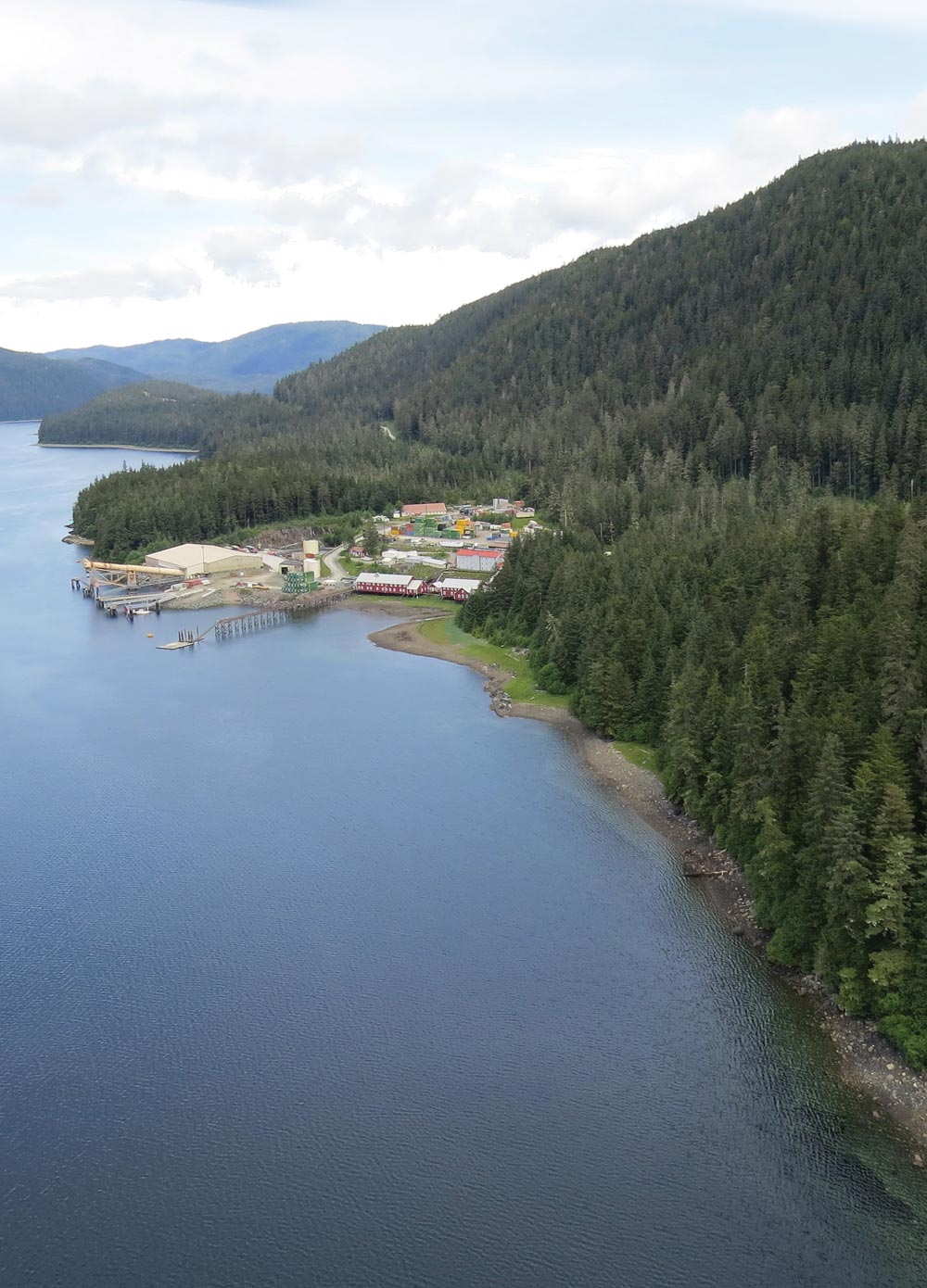ecla Greens Creek mine is unique in the United States. Located on Admiralty Island near Juneau, it is the only mine in the country allowed to operate inside a federally protected natural monument. Situated in the mountains at the north end of the island, with additional facilities on the northwestern shore, Greens Creek is entirely surrounded by part of the Tongass National Forest known as the Kootznoowoo Wilderness, after the Tlingit name for the island, which means “Fortress of the Bear.”
Greens Creek has been in production since 1989 (minus a care and maintenance period from April 1993 through July 1996). It is currently ranked as the tenth largest silver mine in the world. The property includes 440 unpatented lode mining claims, 58 unpatented millsite claims, 17 patented lode claims, and one patented millsite. In addition, the Greens Creek site includes properties under lease from the United States Forest Service (USFS), and it also has title to mineral rights on 7,301 acres of federal land acquired through a land exchange with the USFS where the company is exploring but not mining.
All claims and leases comprise a total of approximately 24 square miles. Greens Creek consists of the mine, an ore concentrating mill, a tailings storage area, a ship-loading facility, camp facilities, a ferry dock, and other related infrastructure.
The primary mining methods are cut and fill and longhole stoping. The Greens Creek ore processing facility includes a SAG/ball mill grinding circuit to grind the run of mine ore to liberate the minerals and produce a slurry suitable for differential flotation of mineral concentrates. A gravity circuit recovers free gold that exists as electrum, a gold/silver alloy in the ore. Gravity concentrates are produced from this circuit prior to flotation. Three concentrates are produced: a silver concentrate which contains most of the silver recovered; a zinc concentrate, which is low in precious metals content; and a zinc-rich precious metals concentrate. A third-party processor turns the concentrate into doré bullion, which can be further refined and sold to precious metal traders. The mine’s products are shipped from the Hawk Inlet marine terminal a few miles from the mill and sold to smelters and traders worldwide.
The current mine plan at Greens Creek estimates enough reserves for approximately thirteen more years of production, but the company typically adds as many new reserves as it mines each year. Underground definition and exploration drilling during 2021 focused on eight of the nine known mineralized zones on the property. Planned activities to potentially add reserves in 2022 include approximately 80,000 feet of definition drilling in five zones and approximately 20,000 feet of exploration drilling in six zones.
As of December 31, 2021, the company employed 464 people at the Greens Creek mine, and 80 percent of the company’s workforce is local. The creek that gives the mine its name lies near the southern boundary of the City and Borough of Juneau, which encompasses just enough of Admiralty Island to make Hecla Mining the largest private-sector employer and taxpayer in the capital city.
General Manager
Hecla Greens Creek Mine
As part of the company’s environmental stewardship, Hecla is doing its part to combat climate change by sharply reducing greenhouse gas emissions. In 2021, Hecla achieved a company-wide reduction of its greenhouse gas scope 1 and scope 2 emissions by 43 percent over 2019 levels and achieved its goal of net zero on scope 1 and scope 2 emissions.
Scope 1 emissions come from sources the company directly owns or controls, such as the diesel-powered electrical generators used at Greens Creek. Scope 2 emissions are those related to power the company purchases from a third-party source, namely Alaska Electric Light & Power (AEL&P).
The emissions reduction at Greens Creek was driven by operating efficiencies that reduce the use of electricity, diesel fuel, gasoline, natural gas, and propane. The company is also focused on increasing the percentage of electricity it purchases from clean energy sources, and this includes the use of renewable hydropower at the Greens Creek mine.
“Our power purchase allowed AEL&P to expand its hydropower capability,” says Erickson. “Since 2006, the use of lower-cost, interruptible hydropower has resulted in a 60 percent reduction on diesel fuel consumption for our operation.”
And Hecla’s Greens Creek power purchase has benefited others. The AEL&P expansion resulted in significantly lower electricity costs for residents of the Juneau area. AEL&P customers have some of the lowest electricity rates in Alaska. Since the time of the expansion, the utility has lowered rates for Juneau residents for a total savings of $70 million. When the Greens Creek mine buys surplus hydroelectricity from the local utility, it reduces the electric bill for all ratepayers in Juneau.
Hecla
Hecla

“By using the dry stack tailings process and recycling actually as much as 50 percent as backfill underground, we are able to minimize the required disturbance footprint at our tails storage facility,” says Erickson. “A dry stack facility which is lined also has a lower risk of seepage to groundwater than a wet tailing impounding might.”
Greens Creek handles its waste streams as regulated by state and federal permits. A majority of solid waste at the mine is containerized and shipped off island to licensed municipal landfills. Some is placed within voids in the mine or in its tailings storage facility as allowed by the mine’s state-issued waste management permit. Hazardous waste generated on the mine site is managed (as required) by the Resource Conservation and Recovery Act regulations. Greens Creek recycles as much waste as it can.
The mine’s water management involves four processes: diversion, containment, recycling, and treatment. Freshwater runoff is diverted wherever possible to minimize contact with mining and processing areas. Runoff from facility areas resulting from precipitation is either incorporated into the milling process or routed to one of the company’s water treatment plants prior to being discharged as allowed by the site’s Alaska Pollutant Discharge Elimination System permit. In terms of water use, the company works on a regular basis to reduce its consumption.
Hecla
Hecla

“Each Hecla employee and contractor is responsible for incorporating the policy into their daily planning and work activities to achieve this commitment,” says Erickson.
They must:
- Design, operate, close, and reclaim its facilities to comply with applicable laws and regulations to meet accepted standards—and to go beyond those standards when they don’t meet Hecla’s values.
- Continuously improve its safe, efficient, and environmentally responsible use of resources, products, and materials.
- Promote employee and contractor knowledge, capability, and accountability in implementation of this policy through the use of environmental management systems.
- Conduct periodic environmental reviews and audits of operations and activities to ensure compliance, identify risks, reduce costs and liabilities, and improve sustainable operations.
- Endeavor to reduce energy and water consumption, implementing continuously improving efficiencies into facilities, projects, and operations.
- Work collectively with educational institutions and agencies to research, develop, and use best technological and management practices to reduce environmental impacts.
“Environmental stewardship starts with safety, and safety is reliant on the quality, training, and dedication of our people,” says Erickson. “Hecla Greens Creek prioritizes finding the best people and arming them with thorough training and quality leadership. Our goal is to ensure Hecla employees always put safety first in everything they do every day. This is important for the safety of our mine, our environment, and our employees, and it means we must maintain a dedication to both big-picture engineering and worksite behaviors.”
Hecla also recognizes that climate change is a part of everyone’s future. According to the company’s website, it is committed to incorporating climate-related risks and opportunities into its risk management and strategic planning processes.
Finally, when mining is finished at Greens Creek, the company is obligated to return the site to its natural condition. “Reclamation is an integral part of every Hecla project from the initial design process,” the company states. While Hecla believes the mine has years of life left, it already has a plan for the responsible closure and rehabilitation of the mine site.
“We have established a set-aside with nearly $100 million to pay for reclamation of the mine site after mining operations have ended,” says Erickson.
Until then, the silver that goes into making battery-electric vehicles that let Juneau residents take full advantage of their city’s cheap hydropower will continue to come out of the ground, just across the water, from the Fortress of the Bear. ![]()
Hecla
Hecla
